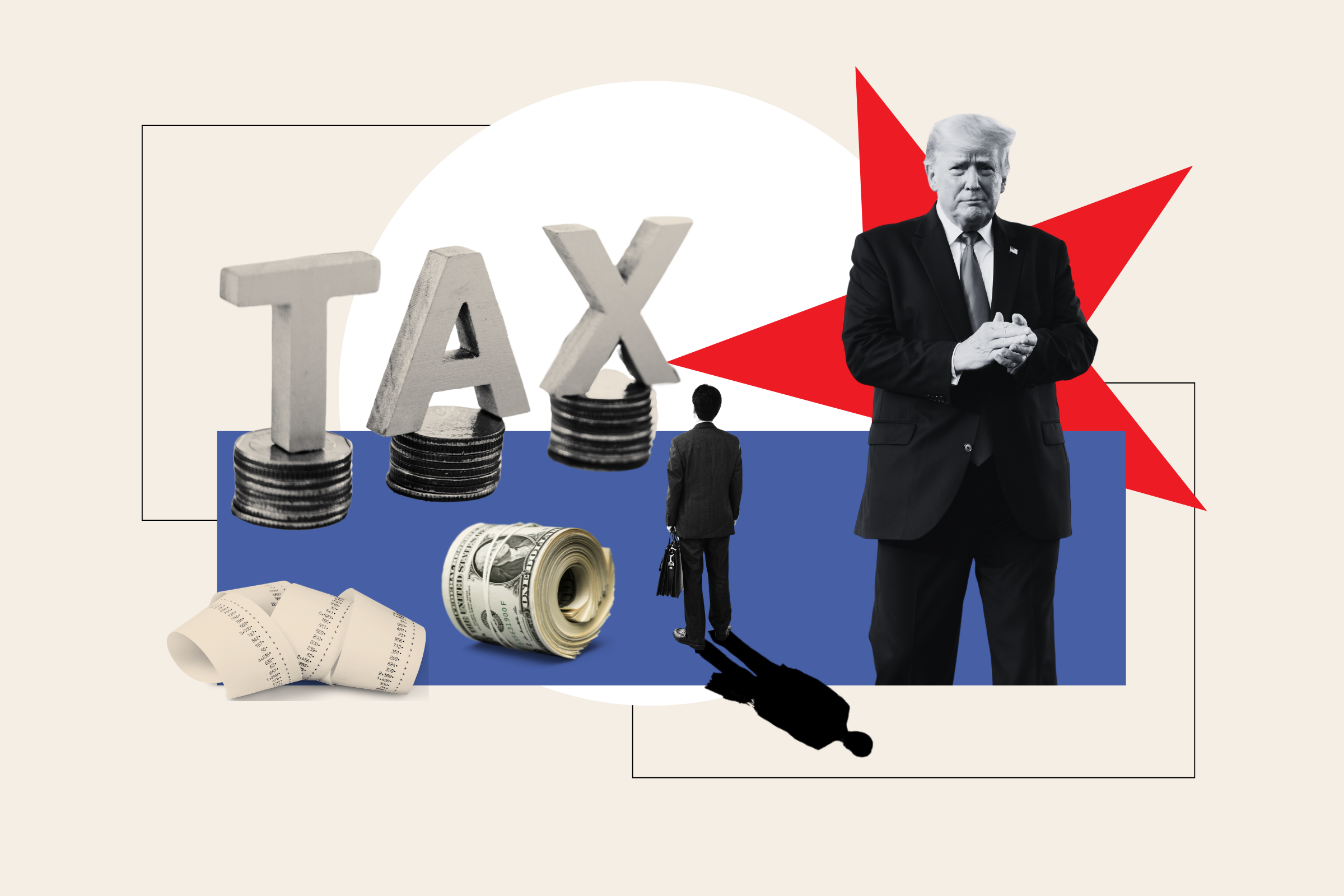Stay at home mom tax credit 2025 could revolutionize financial support for families under the potential influence of former President Donald Trump's policies. As economic landscapes evolve, tax credits have become a crucial tool for supporting households, especially those where one parent chooses to stay at home to care for children. This initiative aims to provide financial relief and empower families to make choices that align with their values.
The concept of a stay at home mom tax credit has been gaining traction in recent years. It addresses the financial challenges faced by families who prioritize caregiving over full-time employment. With the potential return of Donald Trump to the political scene in 2025, discussions around this tax credit have intensified, as his administration has historically shown interest in family-friendly policies.
This article will explore the stay at home mom tax credit 2025 in detail, analyzing its potential benefits, challenges, and how Trump's influence could shape its implementation. By the end, you'll have a comprehensive understanding of this tax credit and its implications for families across the United States.
Read also:Top Tv Shows Featuring Hayden Tank A Comprehensive Guide
Table of Contents
- Introduction to Stay at Home Mom Tax Credit
- Trump's Influence on Tax Policy
- Eligibility Criteria for Tax Credit
- Benefits of Stay at Home Mom Tax Credit
- Economical Impact on Families
- Implementation Challenges and Solutions
- Comparison with Existing Tax Credits
- Statistical Data on Stay-at-Home Parents
- Future Potential of Stay at Home Mom Tax Credit
- Conclusion and Call to Action
Introduction to Stay at Home Mom Tax Credit
Understanding the Concept
The stay at home mom tax credit is designed to provide financial relief to families where one parent chooses to stay at home to care for their children. This credit acknowledges the valuable contributions of stay-at-home parents to society and aims to reduce the financial burden on these households. The tax credit could take various forms, including direct cash payments or deductions from taxable income.
Why It Matters
Stay-at-home parents play a vital role in shaping the future of society by nurturing the next generation. However, their work often goes unrecognized in traditional economic frameworks. A tax credit like this would help bridge the gap, ensuring that these families receive the support they deserve. The potential introduction of this credit in 2025 could be a game-changer for millions of families.
Trump's Influence on Tax Policy
Trump's Previous Tax Reforms
During his presidency, Donald Trump implemented significant tax reforms, including the Tax Cuts and Jobs Act (TCJA) of 2017. This legislation aimed to reduce taxes for individuals and businesses, with a focus on middle-class families. Trump's approach to tax policy has consistently emphasized family-friendly measures, making him a strong advocate for initiatives like the stay at home mom tax credit.
Potential Future Policies
If Trump returns to office in 2025, his administration could prioritize expanding existing tax credits or introducing new ones. His influence could lead to more comprehensive support for stay-at-home parents, potentially increasing the credit amount or broadening eligibility criteria.
Eligibility Criteria for Tax Credit
Eligibility for the stay at home mom tax credit would likely depend on several factors, including income level, family size, and the presence of a stay-at-home parent. To qualify, families may need to demonstrate that one parent is actively involved in caregiving duties. Below are some potential eligibility criteria:
- Household income below a specified threshold
- Presence of dependent children under a certain age
- Proof of caregiving responsibilities
Benefits of Stay at Home Mom Tax Credit
Financial Relief for Families
One of the primary benefits of the stay at home mom tax credit is the financial relief it provides to families. By reducing taxable income or offering direct payments, this credit can help offset the costs associated with raising children, such as education, healthcare, and extracurricular activities.
Read also:What High School Did Addison Rae Go To Unveiling The Educational Journey Of A Tiktok Sensation
Empowerment of Stay-at-Home Parents
This tax credit empowers stay-at-home parents by recognizing the value of their work. It acknowledges that caregiving is an essential contribution to society and provides a financial incentive for families to make choices that align with their values.
Economical Impact on Families
The introduction of a stay at home mom tax credit could have a significant impact on family finances. By reducing the financial strain on households, this credit could improve overall economic stability and well-being. Additionally, it could encourage more parents to stay at home, potentially leading to better child development outcomes.
Implementation Challenges and Solutions
Challenges in Implementation
Implementing a stay at home mom tax credit comes with its own set of challenges. These include determining eligibility criteria, ensuring fair distribution of funds, and addressing potential criticisms from opponents. Policymakers will need to carefully consider these factors to create an effective and equitable program.
Possible Solutions
To overcome these challenges, policymakers could adopt a phased approach to implementation, starting with pilot programs in select states. This would allow for testing and refinement of the program before a nationwide rollout. Additionally, collaboration with community organizations could help identify eligible families and provide support during the application process.
Comparison with Existing Tax Credits
While the stay at home mom tax credit is a unique initiative, it shares similarities with existing tax credits such as the Child Tax Credit (CTC) and Earned Income Tax Credit (EITC). However, it differs in its focus on stay-at-home parents, offering a more targeted approach to financial support. Below is a comparison of these credits:
- Child Tax Credit: Provides a fixed amount per child, regardless of parental employment status
- Earned Income Tax Credit: Focuses on low-income working families
- Stay at Home Mom Tax Credit: Specifically targets families with stay-at-home parents
Statistical Data on Stay-at-Home Parents
Data from the U.S. Census Bureau and other sources indicate that approximately 10 million parents in the United States choose to stay at home to care for their children. This number has remained relatively stable over the past decade, highlighting the importance of addressing the financial needs of these families. Below are some key statistics:
- Approximately 9% of married couples have a stay-at-home parent
- Stay-at-home parents are more likely to have higher levels of education
- Financial challenges are a common concern among stay-at-home families
Future Potential of Stay at Home Mom Tax Credit
The future potential of the stay at home mom tax credit is significant, especially with the possible return of Donald Trump to the political stage in 2025. His administration could prioritize this initiative, leading to increased support for stay-at-home parents and their families. As economic and social landscapes continue to evolve, tax credits like this could become increasingly important tools for promoting family well-being.
Conclusion and Call to Action
In conclusion, the stay at home mom tax credit 2025 represents a promising opportunity to support families and recognize the valuable contributions of stay-at-home parents. With the potential influence of Donald Trump, this initiative could gain significant momentum in the coming years. We encourage readers to stay informed about developments in tax policy and consider how this credit could impact their own families.
We invite you to share your thoughts and experiences in the comments section below. Additionally, feel free to explore other articles on our site for more insights into tax policy and family finance. Together, we can work towards a future where all families receive the support they need to thrive.
For further reading, consult the following sources:
- U.S. Census Bureau
- Tax Policy Center
- Internal Revenue Service (IRS)

